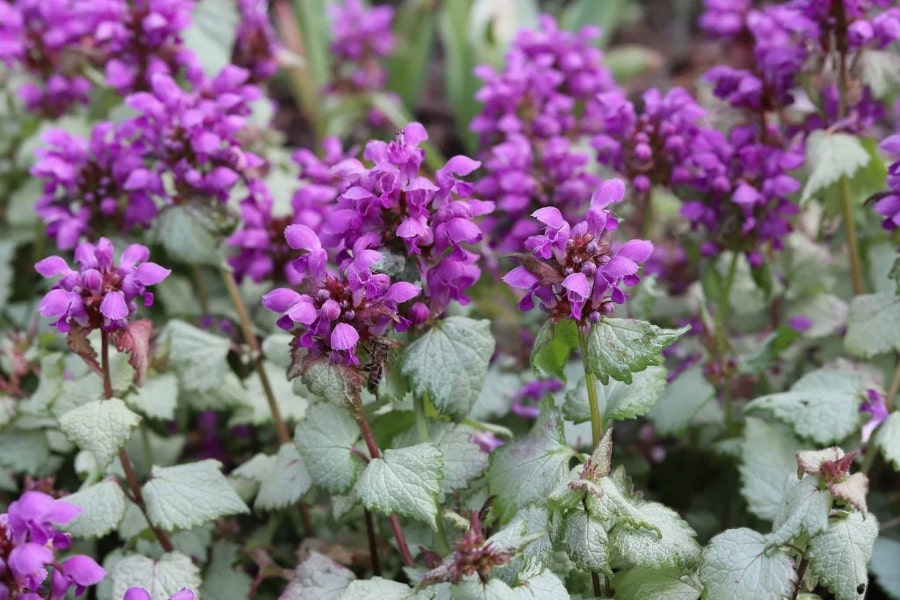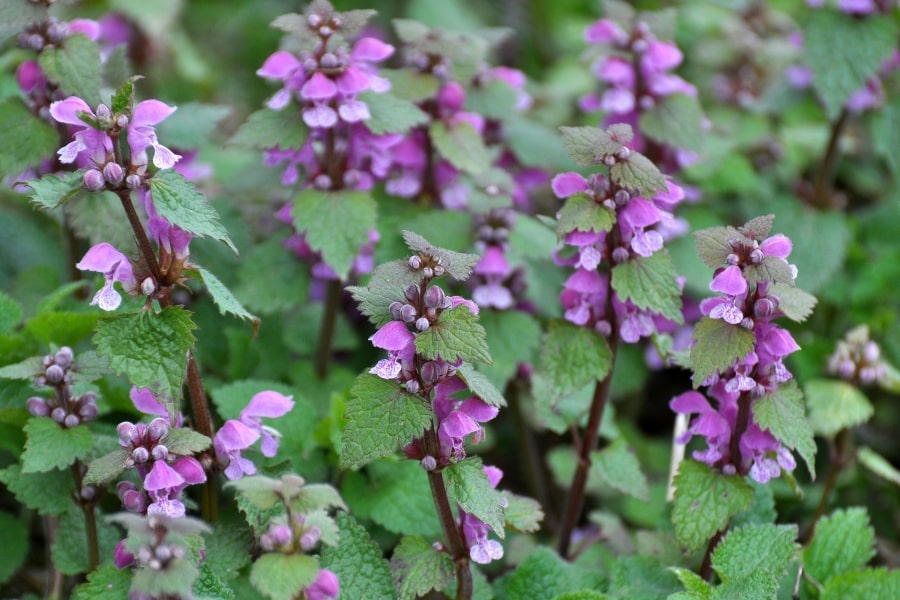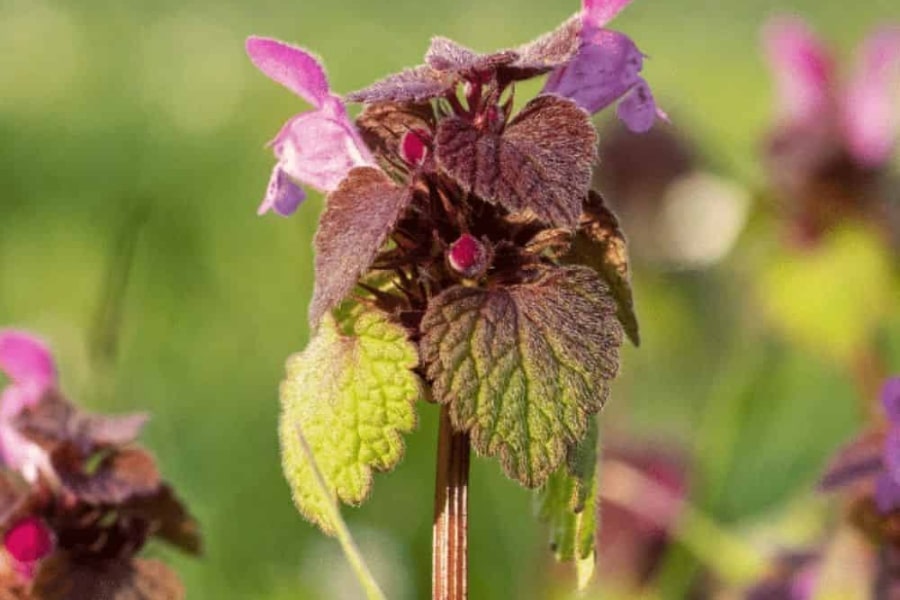Lamium, commonly known as Dead Nettle, is a genus of flowering plants in the mint family (Lamiaceae). This diverse group of plants is native to Europe, Asia, and North Africa, including both annual and perennial species. Lamium are low-growing, spreading plants that form dense mats or clumps and are valued for their attractive foliage, showy flowers, and ability to attract pollinators.

Our Selection of Lamium
At Martin Garden Center, we grow the Golden Anniversary variety, as it is not readily available through our vendors. For other cultivars, we rely on stock from our regional vendors. Some common varieties that we receive include Orchid Frost, Purple Dragon, White Nancy, Shell Pink, and Beacon Silver. We typically have 2-3 cultivars available in 4″ containers in late Fall through early Spring, but we rarely see it during the Summer.
Growing and Caring For Lamium
Lamium is a versatile and adaptable plant. One of the key attributes of Lamium is its ability to thrive in both sun and shade, making it a valuable addition to different areas of the garden. In regions with cooler climates, Lamium tends to appreciate a bit more sunlight. While in hotter climates such as the Upstate, Dead Nettle requires afternoon shade to prevent leaf scorch.
One notable advantage of Lamium is its ability to grow in areas with poor soil fertility or challenging growing conditions. Lamium can handle various soil types and can grow well in acidic and alkaline conditions. In ideal conditions, this plant prefers moderately moist, well-draining soil rich in organic matter. Regular watering, particularly during dry spells, will help Lamium maintain its lush appearance and prevent stress.
Lamium doesn’t demand excessive fertilization and can thrive in average garden soils. However, a light application of a balanced, slow-release fertilizer in early spring can boost their growth and flowering. Choose a fertilizer with a balanced nitrogen, phosphorus, and potassium ratio to promote overall plant health. Be cautious not to over-fertilize, as excessive nutrients can lead to lush foliage at the expense of flowers.
Pruning Lamium is a straightforward task, contributing to a more compact and attractive appearance. In early spring or late fall, trim the dead or leggy stems to encourage fresh growth and maintain a neat shape. Deadheading enhances the plant’s aesthetic appeal and promotes continuous blooming. Snip off faded flowers regularly throughout the growing season to redirect energy toward new flower production. Additionally, pruning helps prevent Lamium from becoming invasive, as some varieties can spread vigorously.
In terms of common pests and diseases, Lamium plants are relatively resilient. However, like many other plants, they can be susceptible to fungal diseases in overly wet conditions. Adequate air circulation and spacing between plants can help prevent such issues. Dividing clumps of Lamium plants every few years can help rejuvenate them and is best done in early spring or fall when the weather is mild.

Leaves and Flowers
The leaves of Lamium plants are one of their distinguishing features. They are typically heart-shaped or rounded with scalloped or toothed edges. The leaves are arranged oppositely along the stem and have a slightly fuzzy texture. The foliage color varies depending on the cultivar, ranging from variegated combinations of green and silver to solid green or purplish hues. The leaves often provide attractive ground cover even when the plants are not blooming.
However, their showy flowers are often the main attraction. The flowers are tubular and emerge in clusters from the leaf axils. They come in many colors, including pink, purple, white, and yellow. The flowers are generally two-lipped, with the upper lip comprising two petals and the lower lip containing three petals.

Uses in the Garden
Lamium is commonly used as a ground cover due to its rapid and vigorous spreading habit. It is an excellent choice for covering bare patches of soil and preventing weed growth. Lamium’s dense mat-forming growth adds visual interest and helps in moisture retention and erosion control. The plant’s ability to flourish in shaded areas where other plants might struggle makes it a valuable asset for creating vibrant compositions in low-light spots.
Furthermore, its blooms can provide a splash of color and attract pollinators, enhancing the garden’s biodiversity. Lamium can also act as a spiller in a container. However, in the Upstate, Lamium is only semi-evergreen, all depending on whether the winter is mild.
Frequently Asked Questions
Is Lamium a Perennial?
Yes, Lamium is a perennial plant. Lamium belongs to the mint family and encompasses several species, and these plants typically go through a period of dormancy during the winter before regrowing in the spring.
Is Lamium Deer Resistant?
Deer typically avoid plants with fuzzy or aromatic leaves, and Lamium falls into this category with its soft, textured foliage. While no plant can be considered entirely deer-proof, Lamium is less likely than most to be browsed by deer.
Is Lamium Poisonous to Cats and Dogs?
Lamium, commonly known as dead nettle, is not known to contain substances that are harmful to pets. However, some animals may have allergies or sensitivities to certain plants, and ingesting large quantities of any plant material can sometimes lead to mild gastrointestinal upset.
